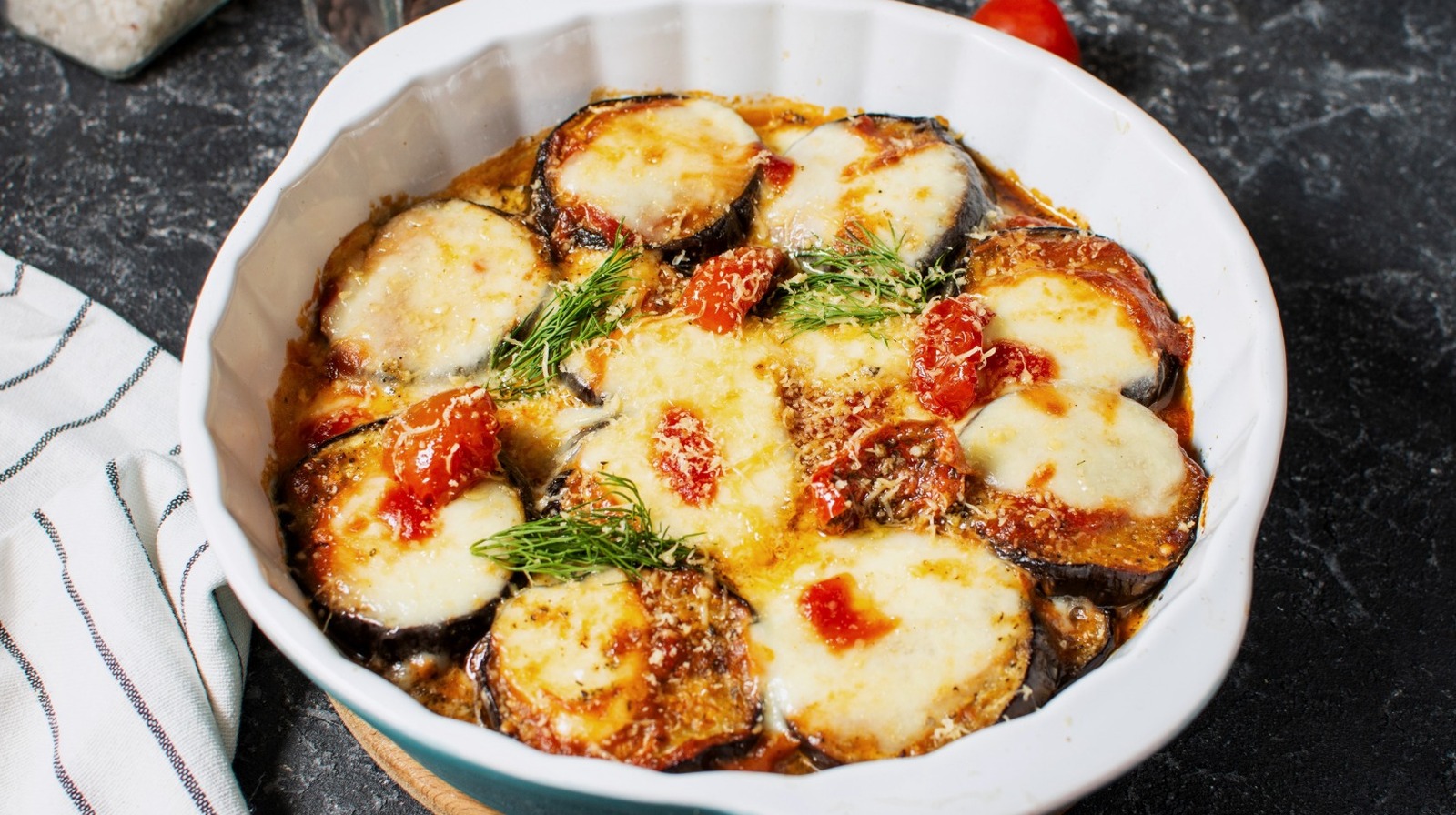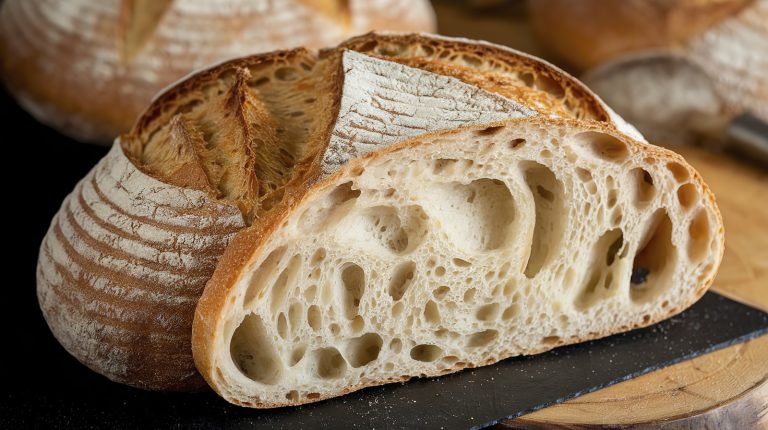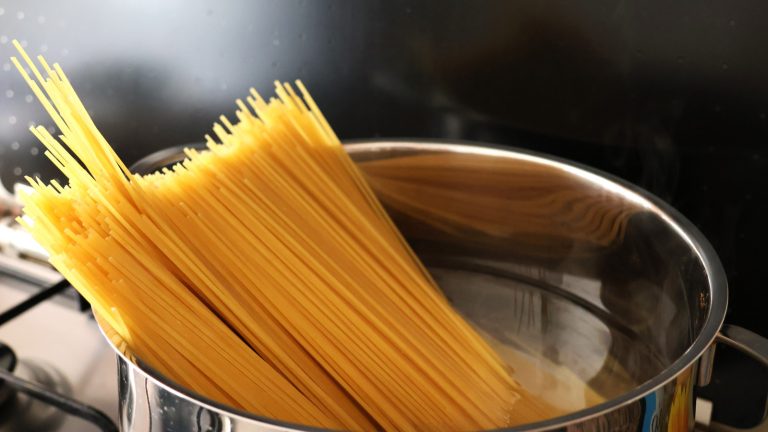If eggplant isn’t in your meal rotation, it should be. Despite its botanical status as a fruit, eggplant has a vegetable flavor that strikes the right balance between bitter and umami. Using canned eggplant for an easy pasta upgrade makes a delightful quick meal, but for a classic eggplant Parmesan, fresh is best. The only drawback to using this ingredient is how wet it is. Fresh eggplants are full of moisture on the inside, and it doesn’t always evaporate from the food. Chowhound spoke with an expert for advice to ensure that your eggplant Parmesan doesn’t turn into a soggy mess.
“People tend to treat eggplant like a zucchini, which can lead to steamed mush. Since it’s a sponge, if you skip salting, don’t fry correctly, or drown it in sauce, it’s game over,” says Thompson Palm Springs Executive Chef Quentin Garcia. Garcia is at the helm of Lola Rose Grand Mezze, which offers a variety of dishes with rich Eastern Mediterranean flavors.
Eggplant Parmesan is crunchy and savory when done right, but forgetting to drain the moisture can produce disastrous results, especially if you plan on baking it. Sometimes things go wrong even when we planned ahead, so to fix a broken Parm, Garcia says, ” … You can salt it, dry it, bread it, fry it. You can even throw in some panko or cheese for damage control.”
Salting eggplants for eggplant Parmesan or other dishes
To prepare an eggplant for cooking, start by cutting it into pieces. You can do medallions, thick chip-like strips, or, even better, French fry-style eggplant slices. Sprinkle a generous amount of salt on top of the pieces and let them dry on a surface where the water can drain, such as a paper towel, colander, or cooling rack. After 10 to 30 minutes, the salt will have absorbed enough moisture to be ready for cooking. Seriously, don’t be afraid of drying these pieces out because there’s always much more water inside than you’d think. Next, run the eggplant pieces under cold water to remove the salt and oily moisture on the surface, and then dry them with a paper towel or any other clean cloth.
Heat draws more moisture out of the eggplant pieces as they cook, making Parmesan the perfect companion. The moisture from the eggplant steams and melts the cheese on top, and the cheese helps prevent the eggplant from becoming too soggy. Once you’ve set your eggplant up for textural success, you can experiment with the rest of the elements, such as by swapping the marinara out for a vodka sauce that makes a creamier eggplant Parmesan.






